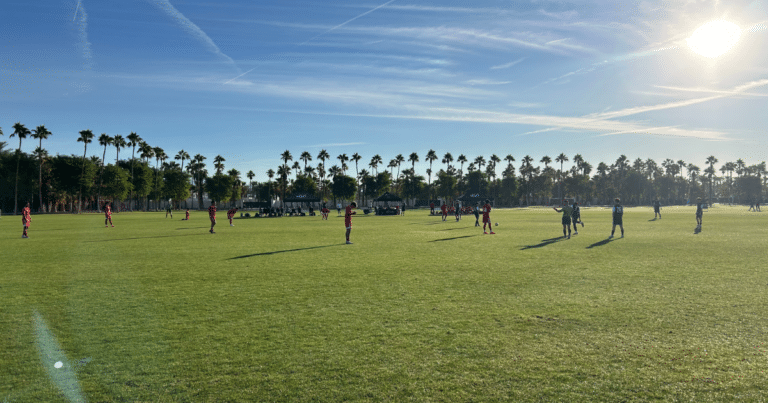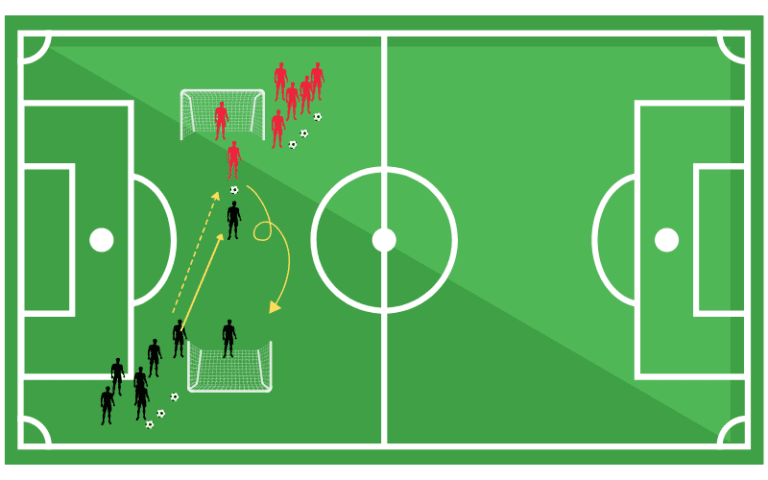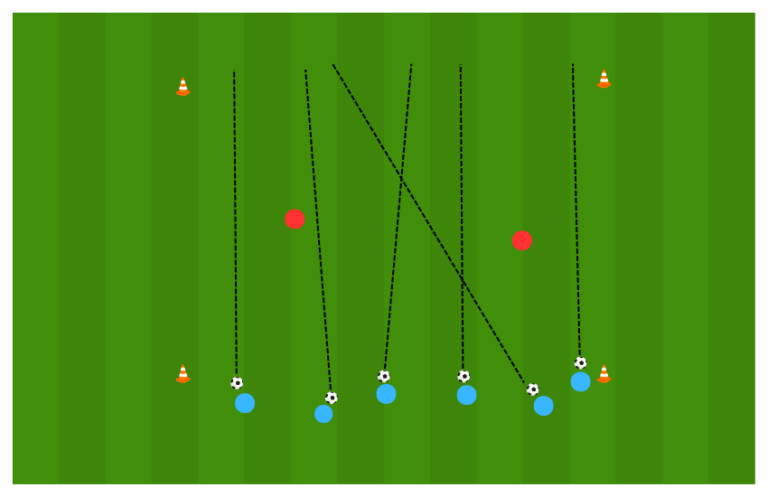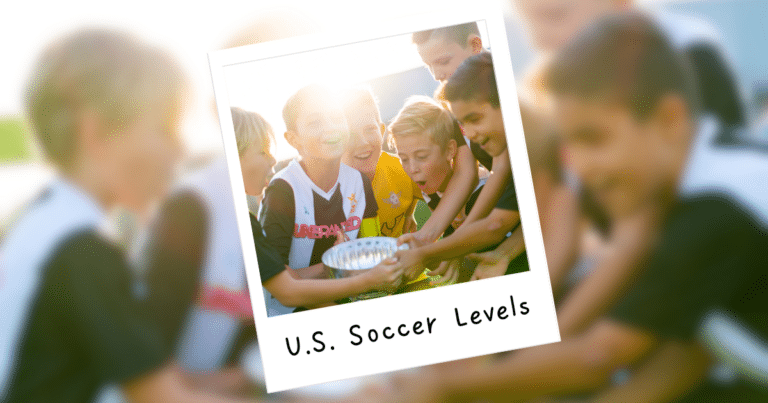How to Pass a Soccer Ball: Tips for Success
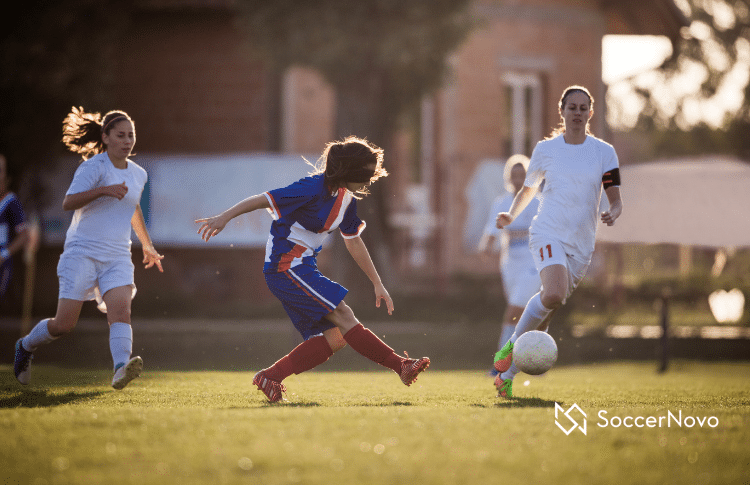
Learning how to pass a soccer ball is one of the first and most important skills every player should master.
Passing is an essential part of the game that can help accelerate a player’s success for years to come.
Key Takeaways From This Article:
- Passing should be a priority for player and team development.
- The most fundamental (and underrated) part of passing is keeping the ball on the ground.
- Passing gets the ball up the field much faster than dribbling. As such, players should look to pass first and dribble second.
When we think of passing a soccer ball, we just think of kicking it from point A to point B but there’s more to it. The effectiveness is in the details.

Knowing how to pass a soccer ball effectively can help your team create more scoring opportunities, maintain possession of the ball, and control the pace of the game.
It is noticeable to watch players and teams that know how to pass effectively. Ultimately, these teams typically have to run less as the ball is pinged with precision up the field. Each player who touches the ball is just a sequence of the overall play. This type of play can start at any age. It is fun to watch!
In this article, we will explore different techniques and tips for passing a soccer ball, as well as the different types of passes and when to use them.
How to Pass a Soccer Ball (Step-by-Step)
Foot Positioning
When it comes to passing a soccer ball, how and where you place your foot makes all the difference. In fact, the position of the foot can affect the accuracy, power, and direction of the pass.
Here are some tips on how to position your foot for the perfect pass:
- Plant Foot: The plant foot is the foot that is stationary and provides balance and stability during the pass. It should be placed next to the ball, pointing towards the target. The closer the plant foot is to the ball, the more accurate the pass will be.
- Passing Foot: The passing foot is obviously the foot that makes contact with the ball. It should be placed behind the ball, with the toes pointed down and the ankle locked. The part of the foot that makes contact with the ball will depend on the type of pass being made. We’ll address the different types of passes further down in this article.
- Body Position: The body should be facing the target, with the shoulders and hips squared with each other. This helps generate power and accuracy.
- Weight Distribution: The weight should be distributed evenly on both feet, with slightly more weight on the plant foot. Your plant foot will feel like it’s digging into the ground a bit. This will help maintain more balance and stability.
Body Positioning
You should always be aware of your body position in relation to the ball and intended target.
The following tips can help ensure proper body positioning:
- Plant foot: The plant foot should be placed slightly behind the ball and pointed toward the target. This provides stability and helps guide the ball in the right direction.
- Hip and shoulder alignment: The hips and shoulders should be aligned with the target. There should be a direct path from the passer to the intended receiver. This allows for a more accurate and powerful pass.
- Body angle: Your body should be angled towards the target. This allows for a better view of the target and helps guide the ball in the right direction. There will be times when you will need to turn and shift your entire body to make that angle.
It is important to note that body positioning can vary depending on the type of pass being made. For example, a long pass may require a wider stance and a more angled body position compared to a short pass.
Additionally, you should always be aware of their surroundings and adjust your body positioning accordingly. For example, if there is an opposing player blocking your intended receiver, you may need to adjust your body angle or use a different type of pass to get the ball to a teammate.
You need to adjust accordingly based on the situation that arises. Being a robot and following the mechanics to a T will do you a disservice.
Striking the Ball with Different Areas of the Foot
There are several types of passes that can be used depending on the situation. Sometimes a pass needs a remix to be effective but more times than not you’ll find these common types of passes in soccer.
Using the Inside of Your Foot to Pass
The most common type of soccer pass is one made with the inside of the soccer cleat.

To execute this pass, you should point their plant foot towards the target and use the inside of your foot to strike the ball. Makes sense, right?!
You should follow through with the kicking foot after making contact with the ball. This pass is typically accurate and easy to control, making it ideal for short to medium passes.
For the golfers out there, think of a put and the fluid motion it takes to make the ball go straight. This is the same type of motion for a pass on the inside of the foot.
Using the Outside of Your Foot to Pass
The outside of the foot pass is used when you need to pass the ball quickly and accurately over a short distance.
For instance, if you are dribbling at an opponent and you need to lay a pass to the right, you will use the outside of your foot. In this case, you won’t need to turn your body and waste precious time. You can make this pass on the move.
In order to execute this, you should point your plant foot towards the target and use the outside of the foot to strike the ball.
You should follow through with the kicking foot after making contact with the ball. This pass is useful for changing the direction of play or for passing the ball around an opponent.
Laces Pass
A pass with the laces of a player’s cleat is used when a ball needs to go the distance.
To execute this pass, you should take a few steps back from the ball (or run toward the ball). As you approach the ball, the planted foot should dig into the ground and be used as leverage. Subsequently, you will strike the ball with power.
This pass is very useful for switching the play from one side of the field to the other or for playing a long ball to a teammate in a scoring position.
Passing Techniques for Soccer Players

There are different types of passes that players can use depending on the situation. In this section, we will cover three types of passes: short passes, long passes, and through passes.
Short Soccer Passes
Short passes are used to maintain possession of the ball and create opportunities for teammates to move forward.
You should use the inside of their foot and focus on keeping your body squared and eyes on the target.
It’s important to keep the pass low and accurate to prevent the opposing team from intercepting the ball. Or, making it easier for a teammate to receive it as a bouncing ball makes it more difficult to continue the play forward.
When passing, you should communicate with their teammates by calling out their names or using nonverbal cues such as pointing or eye contact. This will help the receiving player anticipate the pass and move into position to receive it.
Long Soccer Passes
Long passes are used to move the ball quickly up the field and create quicker scoring opportunities.
As youth soccer players advance in their age groups, you should consider the wind direction, field conditions, and the position of their teammates and opponents when making a longer pass. These are all factors that effect a longer pass.
Through Passes in Soccer
Through passes are used to create scoring opportunities by passing the ball through the opposing team’s defense.
This type of pass often requires another element from a player. Field awareness, vision, and anticipation are key components to identify opportunities to make a through pass.
To execute a through pass, you should pass the ball between defenders to a teammate who is making a run toward the goal.
The pass should be made with enough speed and accuracy to reach the teammate before the defenders can get to the ball.
When attempting a through pass, you should consider the position of your teammates and opponents, as well as the speed and direction of the ball.
Why Soccer Passes Shouldn’t Bounce

The most common mistake I see when passing is letting the ball bounce. Luckily, this is an easy fix. But’s important to understand why passes should bounce.
First and foremost, a bouncing ball is more unpredictable compared to a ball played on the ground. It can take unexpected bounces and be difficult for the receiving player to control. This can lead to turnovers.
Second, a bouncing ball is slower than a ball on the ground. When a ball bounces, it loses momentum and speed. This means that the receiving player will have to slow down to control the ball, giving the defending team more time to close in and apply pressure.
Third, bouncing passes are more difficult to execute accurately. When a player tries to bounce a pass, they have to hit the ball with the right amount of force and at the right angle. This requires a high level of skill and precision, which can be difficult to achieve under pressure.
Every short soccer pass should be played on the ground. It should be a habit to instill at a young age. This will provide more accuracy and make it easier for the player’s teammate to receive it. I’ve personally seen U10 teams buy into this idea and they are able to move the ball like the pros. Creating this habit from a young age will help the player develop faster and make it easier on future coaches.
Receiving a Pass in Soccer
Receiving a pass in soccer is just as important as passing the ball. In order to receive a pass, the player must be aware of their surroundings and ready to receive the ball at all times. It’s always advantageous for players, especially midfielders and strikers, to scan the area around them.
You should position yourself in a way that allows you to receive the ball without having to move too much. This means that that you should be facing the direction of the pass and have your body positioned to receive the ball.
When receiving a pass, you should use the inside of your foot to cushion the ball and bring it under control. This allows you to maintain possession of the ball and make your next offensive move.
It is equally as important to keep the ball close to your body when receiving a pass, as this makes it harder for the opposing team to steal it. It also provides the you an opportunity to make another quick pass or dribble.
If the pass is coming in with a lot of speed, you should use the momentum of the ball to cushion it and slow it down. This can be done by directing the ball slightly to the side and allowing it to roll across your body. You can then bring the ball under control and make their next move.
Communication is key when receiving a pass. You should communicate with your teammates to let them know where they want the ball and what they plan to do with it. This allows the team to work together and maintain possession of the ball. This can be calling out their name or a hand gesture to let them know you want the ball.
The best youth players will call or demand the ball when they are open. It creates more touches on the ball and makes it easier for your teammate who now knows you are open.
Best Passers in Professional Soccer
Sometimes it’s good to model professional players as they are on TV and have mastered the fundamentals.
The following players have the ability to deliver accurate passes with precision and at the right moment, making them valuable assets to their teams.
Here are some of the best passers in soccer:
Lionel Messi: The Argentine forward is not only one of the best goalscorers in the game but also one of the best passers. His ability to find his teammates with precision passes and through balls is unmatched.
Kevin De Bruyne: The Belgian midfielder is widely regarded as one of the best passers in the game today. His ability to play both short and long-range passes with accuracy has been a key factor in Manchester City’s recent success.
Bruno Fernandes: The Portuguese midfielder has been a revelation for Manchester United since joining in January 2020. His ability to play through balls and find his teammates with accurate passes has been a key factor in United’s recent success.
Luka Modric: The veteran Croatian midfielder is still one of the best passers in the game today. His ability to control the midfield and find his teammates with accurate passes has been a key factor in Real Madrid’s recent success.
Toni Kroos: The German midfielder is known for his ability to control the tempo of the game and find his teammates with accurate passes. He has been a key player for Real Madrid and the German national team.
Joshua Kimmich: The German midfielder is known for his versatility and ability to play in multiple positions, but his passing ability is what sets him apart. He has been a key player for Bayern Munich and the German national team.
By watching professional matches, players can model the behaviors of some of the best soccer players in the world.
Of course, have your own style but pick the fundamentals out of these players. Watch how they move, how they see the game, how they pass short and long, and how much confidence they have on the field.
Final Thoughts on Passing
Passing a soccer ball is easy. Passing a soccer ball effectively takes hours of training and understanding the fundamentals to master.
By following the tips and techniques outlined in this article, you can improve their passing accuracy, speed, and power.
You should focus on developing their passing skills through regular practice sessions and gameplay. You can also practice on your own. Having a soccer rebounder or finding a wall can give you reps to practice your passing and touch.
By incorporating these tips and techniques into their training routines, you can become a better passer and a big contributor to your team!
Frequently Asked Questions
What is a pass in soccer?
In soccer, a pass is a deliberate attempt by a player to transfer the ball to a teammate. The objective of a pass is to move the ball closer to the opponent’s goal or to create scoring opportunities for the attacking team.
What part of the foot is used to pass the ball?
The inside of the foot is the primary way to pass the ball. You can also pass from the outside of your foot or the laces of your cleats.
Should you look at the ball when passing?
Yes, it is important to look at the ball when passing in order to ensure accuracy and control. By keeping your eyes on the ball, you can better judge its speed and trajectory, as well as anticipate any obstacles or defenders in your path. However, it is also important to be aware of your surroundings and other players on the field, so you can make quick decisions and adjust your pass if necessary.

Written By: Beau Bridges
Beau is the founder of SoccerNovo, dedicated to helping players and parents navigate the youth soccer landscape. As a former youth coach and soccer parent, he shares insights on player development, recruiting, and the ever-evolving soccer scene in the U.S.
Let’s connect


